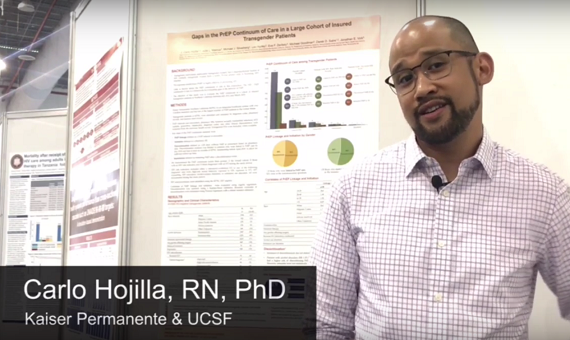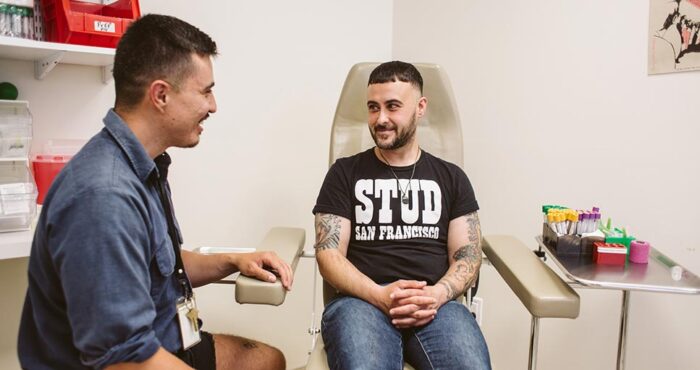Transcript
The reason it’s important to look at PrEP uptake in trans populations is because it’s a group that, honestly, we’ve ignored as researchers and health care providers. It’s a group that’s vulnerable to HIV infection for a host of different reasons. If you’re looking at trans women, specifically, trans women are almost 50 times more likely to become HIV infected. If you’re thinking about transmasculine folks or trans men, we don’t really have that much data. But Asa Radix had a really great talk earlier at the plenary that gave an estimate of HIV incidence in transmasculine folks somewhere between 0 and 10%.
Again, we don’t know that much about transmasculine folks because we’ve been ignoring them in our studies. I think this study brings to light the fact that transmasculine folks are interested in using PrEP. They are using PrEP. We need to better address that.
The Strong Study was a validated cohort of transmasculine and transfeminine members of Kaiser Permanente. These are folks that had membership prior to 2015 and for this particular study, we looked at folks who had active membership within Kaiser during the PrEP era, which was 2012 to March 2019.
For our overall cohort we looked at folks who had some kind of HIV risk indicator. These are folks who, during the study period of 2012 to 2019, had a positive bacterial STI, had a diagnosis code of HIV exposure, or STI exposure, or had a diagnosis of anal warts. For folks who had some kind of risk indicator, about 16% were linked to PrEP care.
A good portion of folks who have factors that we think may place them at greater risk of HIV, they are not getting linked to PrEP care. Of those folks who had some risk factor and were linked to PrEP care, about 10%, a really small number, actually started PREP. The bottom line is that we could be doing a much better job of linking folks to PrEP care, starting them on PrEP, and retaining them on PrEP.
We were surprised that the majority, a good number of folks, who started PrEP were transmasculine. These are folks that we have traditionally not really thought of as being at risk of HIV. When in fact, they might be. Or they are interested in seeking these services. And actually, the seroconversions we saw during the study period, a few of them were transmasculine folks. Based on chart review, we found that folks report not only vaginal sex but also anal sex and other things we would traditionally consider higher risk factors for HIV. Our data begs the question, what are we doing for transmasculine folks? How are we reaching that population? And are we really assessing risk factors appropriately for that population?










